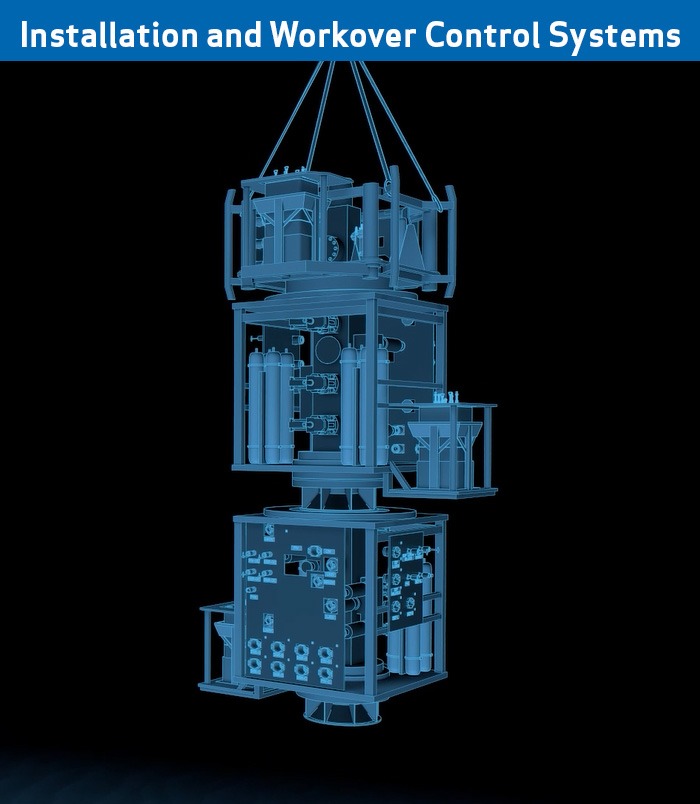Beneath the Surface: Well Interventions Technology 2024

Posted: January 23, 2024
With an increase in oil demand during the second half of 2023, operators are looking to well interventions to ramp up production from existing well reserves. Well interventions pose a solution as quick, efficient, and cost-effective ways to maximize active resources.
From adding equipment and periodic cleaning to pumping and workovers, well intervention systems and strategies vary greatly depending on the well age, location, size, operating conditions, and more. These operations are integral to boosting productivity and maintaining optimal conditions at any time in a well’s productive life.
However, one critical consideration across all wells are effective flow control management. An effective flow control system improves safety, reduces maintenance and workovers, and decreases environmental impact.
In this guide, we dive into the current state of well interventions. We’ll uncover trends, the latest advancements in technology and flow control, and what to expect in the coming year.
Current State of Well Interventions in Oil and Gas
During 2023, oil and gas production saw a significant shift to focusing operations on optimizing efficiency. Oil and gas companies were forecast to spend $58 billion on well interventions in 2023 alone. The strategy enables operators to extract additional resources from existing wells rather than drilling new ones.
Boosting production with well interventions also serves as a more cost-effective and environmentally friendly option. Operators are likely to intervene in mature assets with high production rates (producing for more than five years) that are now showing signs of decline. By 2027, the intervention rate is set to reach 17%, totaling 260,000 wells globally undergoing well intervention processes.
With 2024 expected to be a noteworthy year for the interventions market, Asia, South America, and Africa will lead the 9% growth in onshore interventions. In 2026, Asia (41,413) and South America (9,703) will reach their maximum well intervention capacity. By 2027, North America will account for 64% of the total oil and gas wells ready for interventions.
Investment Trends Impacting Well Intervention Technologies
Environmentally friendly technologies and increased research and development spending from big firms are expanding the global market for well intervention. Further driving demand are rapidly growing end-use industries in emerging economies.
While oil and gas capital expenditure (capex) trends vary somewhat by production sector, the overall trend forecast for capex points over the next five years shows a compound annual growth rate (CAGR) decline of -2.3%. Global upstream operational expenditure (opex), however, is forecast to grow at a CAGR of 2.5% over the next five years.
Although impacted by numerous factors, these trend forecasts reflect models that aim to boost production through cost-effective and efficient well interventions, rather than drilling new wells.
Service purchase points are also set to decline at a CAGR of -1.3%. This could be a result of efficiency improvements, a shift toward less service-intensive production methods, or a market contraction.
What’s Ahead: Well Interventions in 2024
Currently, global well intervention services account for $8.16 billion in revenue. The demand is forecast to rise at a CAGR of 7% over the next 10 years, reaching $16 billion by 2033.
As the oil and gas sector increasingly digitizes operations and improves the accuracy of well condition assessments, the demand for light well intervention services is set to grow at an even higher rate of 7.5% CAGR.
Although well interventions are more time- and cost-effective than entirely new drilling operations, operators and service providers still face noteworthy challenges. For instance:
- Complex Wellbore Conditions: Dealing with wellbores that have complex configurations, such as deviated or horizontal wells, can present challenges in accessing and effectively intervening in the well.
- High Pressures and Temperatures: Managing high pressures and temperatures during interventions requires specialized equipment and careful planning to ensure safety and effectiveness.
- Formation Damage: Interventions can inadvertently cause damage to the formation, impacting both production and reservoir performance.
- Fluid Control and Management: Controlling fluid flow and managing wellbore fluids during interventions is crucial for safety and success.
- Equipment Reliability: It’s essential to ensure the reliability and performance of intervention tools and equipment. Any failures can lead to costly downtime and safety risks.
- Real-Time Monitoring and Decision-Making: Having access to real-time data to make informed decisions during the intervention process is critical. However, it’s challenging to implement effectively and accurately.
Factors Behind Well Interventions Growth
Careful planning, specialized equipment, and a deep understanding of well conditions and behaviors are crucial during interventions.
The use of riserless light well intervention (RLWI) technology, for example, can reduce well intervention costs by up to 60% compared to platform-based systems. What’s more, the global RLWI market shows promising growth forecasts, set to reach $1.9 billion by 2028—a CAGR of 5.5%.
This market growth is also driven by expanding investment in research projects, technological advancements in the offshore sector, and the growing number of advanced oil and gas areas.
Technological Advancements in Well Interventions
Well intervention technological advancements provide significant benefits in terms of improved safety, productivity, efficiency, cost savings, and reduced environmental impact.
For instance, autonomous well intervention systems use robotics, artificial intelligence (AI), and remote monitoring capabilities to perform intervention operations in a well with minimal or no direct human intervention. This approach involves the deployment of autonomous or semi-autonomous systems that can carry out various tasks within the wellbore, such as maintenance, inspections, repairs, or data collection.
By reducing the need for human presence in hazardous or remote well environments, autonomous well intervention can enhance safety, minimize operational risks, and potentially improve overall intervention effectiveness.
Similarly, operators can now use subsea intervention technology advancements such as remotely operated vehicles (ROVs) and autonomous underwater vehicles (AUVs) for inspection, maintenance, and repair tasks. This enables efficient and cost-effective interventions in deepwater and ultra-deepwater environments.
Coiled tubing service advancements have also quickly gained momentum for interventions in various well types, including live, vertical, horizontal, and highly deviated wells. Coil tubing services typically involve the use of a continuous, flexible metal tubing spooled onto a reel. Operators insert the tubing into the well to perform various tasks such as cleanouts, fluid pumping, perforating, and intervention tool deployment. They can also gather data on well conditions such as pressure, temperature, and fluid properties.
Overall, coil tubing services offer a versatile and efficient means of conducting a wide range of interventions. There’s no need to remove and reinstall the traditional jointed pipe, which reduces operational time and cost.
Other Key Advancements
Other technological advancements driving innovation in well interventions include:
- Fiber optic technology for real-time monitoring of downhole conditions
- Data analytics and machine learning for predictive maintenance, optimized intervention strategies, and real-time decision support
- Enhanced imaging and visualization technologies to improve understanding of downhole conditions
- Progressive flow control valve technology to deliver debris tolerance, component longevity, and reliability
As a leader in flow control solutions, Gilmore continuously improves component composition and design to extend service life and decrease operational downtime.
Flow Control Advances in Well Interventions
The increase in deepwater production requires improved safety, reliability, and efficiencies of offshore platforms and automation systems. Larger and more complex fields also demand innovative flow control solutions to increase recovery and extend the life of existing wells. At Gilmore, we provide essential flow control solutions to the energy sector for hydraulic power units (HPUs), high-integrity pressure protection systems (HIPPS), and intervention well access systems.
Our wide variety of control valve designs employ both soft-sealing and shear-sealing technologies. Specialty materials and tungsten carbide achieve best-in-class reliability and durability despite harsh conditions. In addition, our components are adaptable and versatile for use in a variety of topside and subsea applications, high pressure, and standard flow capacities.
Gilmore established a new benchmark in product reliability with the enhancements of our GEN2 series. While exceeding industry standards, the GEN2 Series is intentionally designed with the same footprint as our legacy products. This not only enables ease of field installation but also allows customers to upgrade their systems with minimal disruptions.
Gilmore engaged in a thorough process of research, design, and implementation to make the necessary improvements to legacy products. The new enhancements significantly improve cycle life performance.
GEN2 products are designed to exceed offshore industry requirements with an increase in cycle life proven through extreme qualification testing to meet the demand of 5-year service life under normal operating conditions.
Control Valves
Gilmore offers shear seal–style and poppet-style control valves in two-way/two-position, three-way/two-position, and four-way/two-position configurations. The tungsten carbide metal-to-metal shear sealing offers robust, debris-tolerant control functionality. The valves are available in spring, hydraulic, pneumatic, and trigger actuation types with a pressure range of up to 15,000 psi.
Cartridge Valves
Gilmore’s GEN2 Cartridge Valves push the envelope of higher pressures and temperatures while successfully operating in both clean and corrosive, debris-laden fluids tested to date.
The range includes a two-way/two-position flex valve and a patented three-way/two-position flex valve offering improved flexibility in operation. Both feature enhanced materials, increased temperature capability, and pressure ranges up to 15,000 psi.
SPM Valves
The proprietary cartridge technology of the GEN2 SPM Valves provides an improvement in the SPM life cycle while reducing pressure spikes and decreasing interflow. The newest generation includes two-way, three-way, and four-way varieties with bi-directional capabilities. The increased seal plate thickness resists cracking. In addition, GEN2 SPM cartridges can be placed in existing Gilmore SPM manifold blocks.
Relief Valves
Gilmore’s range of upgraded topside and subsea GEN2 Relief Valves are fast-acting, highly reliable, spring- or pilot-operated hydraulic valves. In accordance with API 16D, the valves open to relieve pressure when it exceeds the desired setting. They feature single and dual vents with ¼-inch up to 1-inch connections and pressure ranges from 150 to 18,000 psi.
Shuttle Valves
Gilmore Shuttle Valves offer consistent and efficient operation in the face of intense systematic shock loads and pressure spikes from water hammer during well interventions. The compact soft seal valves are perfectly suited for providing redundancy in pilot circuits and actuation of larger components. The GEN2 Shuttle Valves extend cycle life through new valve technologies and improve subsea corrosion resistance.
Gilmore | Pneu-Hydro Valves
Gilmore’s pneu-hydro product line includes relief valves (in-line and right angle), check valves, hand valves, shuttle valves, quick vent valves, pneumatic control valves, interface, and pilot sensing valves (high/low). The products feature a wide series of pressure ranges, reliable and repeatable cracking and reseating pressures, and ¼- to ½-inch NPT connections.
Customized Solutions for Improved Well Interventions
Optimizing well interventions and ensuring production efficiency demands system reliability and advanced maintenance strategies. With over half a century of flow control expertise, Gilmore prioritizes developing advanced, innovative, and customizable technologies for improved efficiency, safety, and durability. Our advanced flow control solutions lead to fewer maintenance cycles, less downtime, improved productivity, and lower costs.
At Gilmore, we welcome the opportunity to partner with operators to develop flow control solutions to unique specifications. From design through to successful deployment, Gilmore’s engineers undertake the entire process with full compliance. We also offer spare kits, training, and an aftermarket maintenance and repair service.
Whether you require a customized solution or standard flow control products to boost productivity, maintain safety, and reduce operational costs, we can help. Let’s chat.





